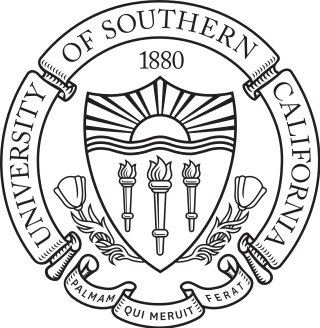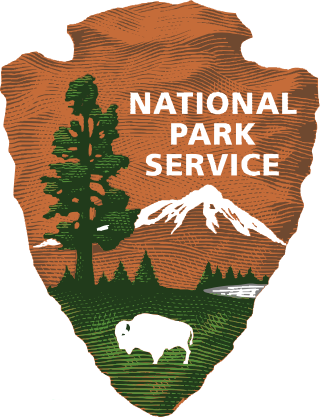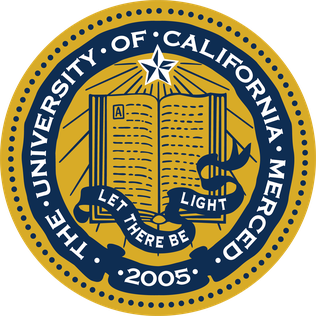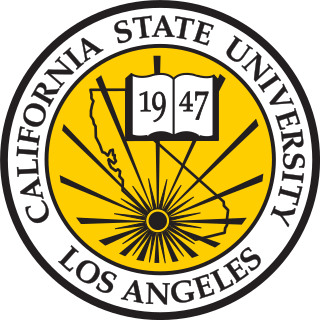
The University of Southern California is a private research university in Los Angeles, California, United States. Founded in 1880 by Robert M. Widney, it is the oldest private research university in California, and has an enrollment of more than 49,000 students.

The National Park Service (NPS) is an agency of the United States federal government, within the US Department of the Interior. The service manages all national parks; most national monuments; and other natural, historical, and recreational properties, with various title designations. The United States Congress created the agency on August 25, 1916, through the National Park Service Organic Act. Its headquarters is in Washington, D.C., within the main headquarters of the Department of the Interior.

John Muir, also known as "John of the Mountains" and "Father of the National Parks", was a Scottish-born American naturalist, author, environmental philosopher, botanist, zoologist, glaciologist, and early advocate for the preservation of wilderness in the United States.

The Sierra Club is an American environmental organization with chapters in all 50 U.S. states, Washington D.C., and Puerto Rico. The club was founded in 1892, in San Francisco, by preservationist John Muir. A product of the progressive movement, it was one of the first large-scale environmental preservation organizations in the world. Since the 1950s, it has lobbied politicians to promote environmentalist policies, even if they are controversial. Recent goals include promoting sustainable energy and mitigating global warming, as well as opposing the use of coal, hydropower, and nuclear power. Its political endorsements generally favor liberal and progressive candidates in elections.

The University of Colorado Boulder is a public research university in Boulder, Colorado, United States. Founded in 1876, five months before Colorado became a state, it is the flagship university of the University of Colorado system. CU Boulder is a member of the Association of American Universities, considered a Public Ivy and is classified among R1: Doctoral Universities – Very high research activity.
Bioneers, under its parent foundation, Collective Heritage Institute, is a non-profit environmental and social justice advocacy organization based in New Mexico and California. Founded in 1990, the organization's philosophy recognizes and cultivates the value and wisdom of the natural world, emphasizing that responses to problems must be in harmony with the design of natural systems. Official Programs include Moonrise Women's Leadership, Restorative Food Systems, Indigeneity ), Education for Action, and the award-winning Dreaming New Mexico community resilience program.

State parks are parks or other protected areas managed at the sub-national level within those nations which use "state" as a political subdivision. State parks are typically established by a state to preserve a location on account of its natural beauty, historic interest, or recreational potential. There are state parks under the administration of the government of each U.S. state, some of the Mexican states, and in Brazil. The term is also used in the Australian states of Victoria and New South Wales. The equivalent term used in Canada, Argentina, South Africa, and Belgium, is provincial park. Similar systems of local government maintained parks exist in other countries, but the terminology varies.

The University of California, Merced is a public land-grant research university in Merced, California, United States. It is one of the ten campuses in the University of California (UC) system. Established in 2005, UC Merced is the newest campus within the UC system. The primary campus is located around five miles north of Merced and sits adjacent to Lake Yosemite. The main campus is around 1,026 acres in size. Large swaths of protected natural grasslands surround the university.

California State University, Los Angeles is a public university in Los Angeles, California. It is part of the California State University system. Cal State LA offers 142 bachelor's degree programs, 122 master's degree programs, and 4 doctoral degrees: the Doctor of Philosophy in special education, Doctor of Education in Educational Leadership, Doctor of Nursing Practice, and Doctor of Audiology. It also offers 22 teaching credentials.

The National Institute for Occupational Safety and Health is the United States federal agency responsible for conducting research and making recommendations for the prevention of work-related injury and illness. NIOSH is part of the Centers for Disease Control and Prevention (CDC) within the U.S. Department of Health and Human Services. Despite its name, it is not part of either the National Institutes of Health nor OSHA. Its current director is John Howard.

The Adirondack Park is a park in northeastern New York protecting the Adirondack Mountains. The park was established in 1892 for "the free use of all the people for their health and pleasure", and for watershed protection. At 6.1 million acres, it is the largest park in the contiguous United States.

The University of Houston–Clear Lake (UHCL) is a public university in Pasadena and Houston in Texas, with branch campuses in Pearland and Texas Medical Center. It is part of the University of Houston System. Founded in 1971, UHCL had an enrollment of more than 9,000 students for fall 2019.

Don Bosco Technical Institute is an all-boys, private, Catholic high school in Rosemead, California, combining college-preparatory academic courses and technological education. The academic curriculum allows students to meet, or exceed, the admission requirements of the University of California, California State University and most other four-year colleges and universities throughout the country.

The Budapest University of Technology and Economics, official abbreviation BME, is a public research university located in Budapest, Hungary. It is the most significant university of technology in the country and is considered the world's oldest institute of technology which has university rank and structure. It was founded in 1782.

The Ahwahnee is a grand hotel in Yosemite National Park, California, on the floor of Yosemite Valley. It was built by the Yosemite Park and Curry Company and opened for business in 1927. The hotel is constructed of steel, stone, concrete, wood, and glass, and is a premier example of National Park Service rustic architecture. It was declared a National Historic Landmark in 1987.

The Yosemite Firefall was a summertime event that began in 1872 and continued for almost a century, in which burning hot embers were spilled from the top of Glacier Point in Yosemite National Park to the valley 3,000 feet below. From a distance it appeared as a glowing waterfall. The owners of the Glacier Point Hotel conducted the firefall. History has it that David Curry, founder of Camp Curry, would stand at the base of the fall, and yell "Let the fire fall," each night as a signal to start pushing the embers. The firefalls were performed at 9 p.m. seven nights a week as the final act of a performance at Camp Curry.
Modern environmental education in the United States began to take shape in the late 19th century with the Nature Study movement, which grew out of efforts to promote the field of natural history by naturalists including Harvard professor Louis Agassiz (1807-1873) and Anna Botsford Comstock, whose Handbook of Nature Study was published in 1911.
The Nature and Wildlife Discovery Center (NWDC) is a multi-campus nature preserve and educational center in Pueblo County, Colorado. It includes a 611-acre mountain park, a lodge, a gift shop, a museum in Beulah, Colorado, a small museum and educational center, an open-space park on the Arkansas River in Pueblo, and an adjacent raptor education and rehabilitation facility.

The Cayuga Nature Center (CNC) is an educational institution addressing nature and environmental issues. It is located on the west side of Cayuga Lake in Tompkins County, New York.

The Yosemite Valley Chapel was built in the Yosemite Valley of California in 1879.

















